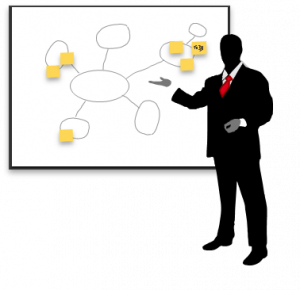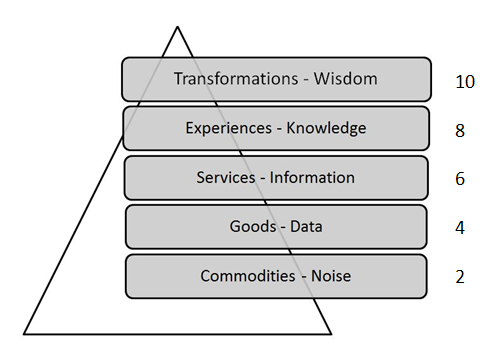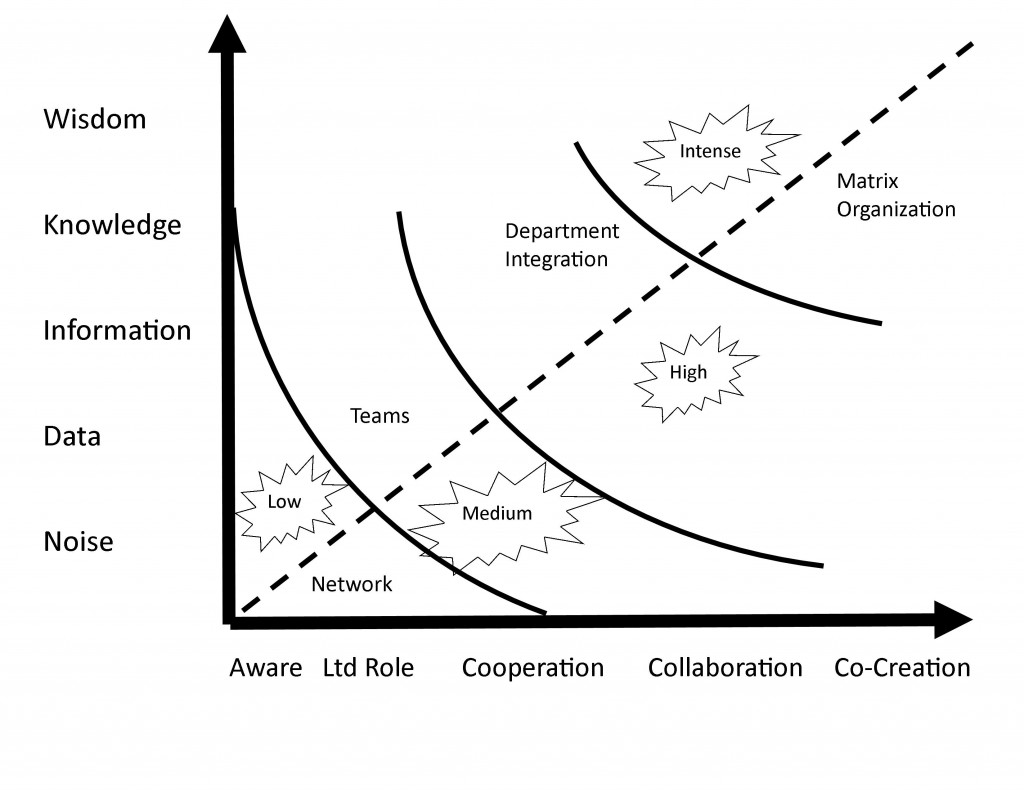Toyota has led us through the turn of the century and beyond establishing “Respect for People” as one of the most important ingredients of the Toyota Production System and Lean Thinking. This has led to establishing a culture of Servant Leadership versus the more traditional command and control type organization. This type of thinking in conjunction with Kaizen (continuous improvement) is the bases of Lean Culture.
However, the age of process and improvement methodologies is starting to fade as the customer experience comes to the forefront. The methodologies of Service Design and Design Thinking are moving at a rapid pace. Lean due to its core concepts of going to Gemba or viewing things from the customer perspective is the one process methodology that is in position to readily adapt to these new forces. The Lean Startup and Agile Movements are excellent examples.
Customer Experience is at the forefront of not only marketing but organizational structure as evidence by the corporate shifts such as IBM to a more Customer-Centric structure. Zappos may be the shining example and the organization to emulate in this new culture. What about this? Is Zappos to Customer-Centricity what Toyota and Lean was to the process movement?
For additional reading: The Zappos Experience: 5 Principles to Inspire, Engage, and WOW. Joseph Michelli takes you through the Zappos company culture revealing what occurs behind the scenes and showing how employees at all levels operate on a day-today basis while providing the leadership methods that have earned the company $1 billion in annual gross sales during the last ten years. Michelli breaks the approach down into five key elements:
- Serve a Perfect Fit—create bedrock company values
- Make it Effortlessly Swift—deliver a customer experience with ease
- Step into the Personal—connect with customers authentically
- S T R E T C H—grow people and products
- Play to Win—play hard, work harder
Not exactly PDCA, but it may be the future of organizational culture.
How hard is it to change? The fact is most weight-loss programs work. The problem is most people; most organizations don’t master them to make them successful. As Dan Pink said, “Mastery is hard.” Hence, less than 1% of companies are successful with Lean or even something as simple as a weight loss program. You can find plenty of advice; you can read books, go to seminars and enroll in programs. I am not against professional advice mind you; they have experience and knowledge that you may not have in your organization. But this is where your plan may break down. Look at all your diet plans for example, why do they stop working? It’s you, not the plan.
To me, this is the excitement of Lean, is this empowering aspect that is not easy. You teach people, rather than solve people’s problems for them. And in doing so, they learn how to make better decisions which leads to better performance.
Dr. Michael Balle stated in an interview with me, “Lean gives you an ideal; it’s a commitment to an ideal.” More importantly, you must understand your own organization, the culture that exist and the culture that your customers expect and are willing to derive value from. You have to make the process your own. You have to rid yourself of Lean or other business processes. Successful companies that started down a Lean path are not Lean anymore, only the unsuccessful ones are. If you are successful at implementing Lean, it is simply not Lean. It’s yours.
Does the Customer Experience mimic the Employee Experience? That is what Zappos is all about! So how would you create that fun game type culture? Of course, I turned to Gamification which has been used primarily to focus on marketing and extending the customer experience. If have to mimic the internal structure to the external, should not Gamification apply internally. I turned to my favorite Gamification resource, Amy Jo Kim and reviewed a recent slide deck of hers that was based on 7 Core Concepts for creating Compelling Products.
- Know your players: design for their personal & social needs
- Build fun/pleasure/satisfaction into your core activity loop
- Design for 3 key stages of your player lifecycle
- Build a system that’s easy to learn and hard to master
- Use game mechanics to “light the way” towards mastery
- As players progress, increase the challenge & complexity
- Embrace intrinsic motivators like power, autonomy & belonging
I have come to believe that in many successful companies there is not a lot of low-hanging fruit left. They simply cannot make efficiency changes that will create significant differences in the market place. Does that mean you should stop? Not at all, that’s part of the dilemma. Your competitors are improving so that means the bar is continuously being raised. The next area of we look at for growth is innovation. Apple has proven that to be the savior. But the fact is new services and features overwhelm most of us that now we seldom see significant advantage in changing. New innovation is seldom a game changer. How many of us, except for a select few see their innovation result in dramatic market place changes (hopefully for the better). And when we do hit a home run, how long does the marketplace take to catch up. Our services are quickly commoditized and as a result our advantages are short-lived. So how can you develop an advantage? First, you must understand your value proposition and how your customer values it. Secondly, you must have the ability to share and create knowledge with your customer at a quicker rate than your competitor. Many will hate the simplicity by how that sounds but that is it. Reinstating it slightly, driven by clear understanding of the values that your organization provides and being open to redefining that value (customer needs change) through pursuing and listening to your most important customers is what is needed. That ability to interact with your customers in this way allows us to outperform our competition hands down. This is not something you can do by becoming customer –focused. You must become customer-centric. From the book Designing Your Organization: Using the STAR Model to Solve 5 Critical Design Challenges, the authors discuss the differences:
Customer-focused strategies and initiatives usually apply to how (services)products are developed and how customer interactions—sales and service—take place. Companies that are customer focused use extensive market research and may even involve customers in the design of their products and services. They create (services)products that customers want rather than trying to build demand for the (services)products they are able to produce. They invest in the training and systems that allow frontline employees to provide smooth and consistent service in transactions. Customer-focused programs, processes, and systems improve an organization, but they do not transform it. Customer-centric strategies do transform an organization. Put simply, a customer-centric organization brings together and integrates products, services, and experiences from within and beyond the firm to provide solutions to the complex and multifaceted needs of its customers.
You must become a customer-centric organization. In the before mentioned book, the authors use the example of the IRS. Originally it was structured based on geographically but in the late 1900s, it was reorganized into four customer segments containing groups of taxpayers with similar characteristics.  They go on to list the Customer-centric advantages:
They go on to list the Customer-centric advantages:
- Customize for customers
- Build in-depth relationships and customer loyalty
- Create more value-added product and service bundles and solutions
- Avoid commoditized services and competition on price alone
There are disadvantages that take place and they listed:
- Divergence among customer/market segments in focus and standards
- Duplication of resources and functions
- Challenge of measuring customer profitability and identifying appropriate segments
I find the area of organizational structure fascinating and an area that needs to come to the forefront as the shift to stronger customer interaction takes place. Another facet that is discussed in the book is for this transformation to take place; re-organization must occur. The structure of the organization is no different than any other process within your organization. It must be structured to facilitate the objectives it is trying to achieve. I think organizational structure deserves serious consideration before contemplating process improvements especially in the service arena. The organizational structure is adaptable to the level of integration needed based on the degree of complexity and the number of services offered to a customer segment. It is not an undertaking that should be done or is needed by all. However, it is worth further study if your improvement efforts are stalled. It may be that organizational change/structure is needed. Note: The organizational construction discussed is based on five components of the Five Star Model developed by Jay Galbraith and explained in Designing Matrix Organizations that Actually Work: How IBM, Procter & Gamble and Others Design for Success (Jossey-Bass Business & Management).
How much interaction do you need with a customer? Determine your iCustomer Level for the Service Products in your list.
If the customer interaction (iCustomer) is an important part of marketing you should be able to measure it. But first, let’s review a few of other popular “scores” out there. Net Promoter is a customer loyalty metric developed by (and a registered trademark of) Fred Reichheld, Bain & Company, and Satmetrix. It was introduced by Reichheld in his 2003 Harvard Business Review article “The One Number You Need to Grow”. The most important proposed benefits of this method derive from simplifying and communicating the objective of creating more “Promoters” and fewer “Detractors”. The Net Promoter Score is obtained by asking customers a single question on a 0 to 10 rating scale, where 10 is “extremely likely” and 0 is “not at all likely”: “How likely is it that you would recommend our company to a friend or colleague?” Based on their responses, customers are categorized into one of three groups: Promoters (9–10 rating), Passives (7–8 rating), and Detractors (0–6 rating). The Klout Score is a measure of your online influence based on your ability to drive action. Every time you create content or engage you influence others. The Klout Score uses data from social networks in order to measure:
- True Reach: How many people you influence
- Amplification: How much you influence them
- Network Impact: The influence of your network
There are of course opponents of each but both are exceptionally good tools when used in the correct way. They give you a measure of how others view you or your product/service. But they do little in the way of informing you how much interaction is required with a customer. Organizations need to have healthy relationships and interactions with their customers. However, they need to know how much interaction is needed based on the product or level of service being delivered. There are two components of the iCustomer Level. One is the depth of your organization’s customer interactions. Second is the Progressions of Economic Value and as it corresponds to a level of Progression of Value Intelligence as described in Pine and Gilmore’s The Experience Economy: Work Is Theater & Every Business a Stage. Starting on the horizontal axis, review both ends of the spectrum with 0 as no interaction and Co-creation of products as a 10 and the highest form of interaction. On that scale of 1 to 10, rate the state of interactions with your customers today. It will have more value if you do this by individual customer segments.
On the vertical axis use the Progressions of Economic Value and corresponding to a level of Progression of Value Intelligence. The Pine and Gilmore description of each stage suffices for the needed scaling:
- If you charge for stuff (noise), then you are in the commodity business
- If you charge for tangible (data) things, then you are in the goods business.
- If you charge for the activities (service) you execute, then you are in the service business.
- If you charge for the time (experience) customers spend with you, then you are in the experience business.
- If you charge for the demonstrated outcome (wisdom) the customer achieves, then and only then are you in the transformation business
The iCustomer level is not a tangible number. It is strictly based on the degree of interaction your organization needs based on the products/services it is delivering. You cannot afford to give high level support when delivering a commodity. Nor can you give a low level of support when you are part of a transformation. There is not wrong or right answers but is meant to serve as a guide. It is a way to create a path for discussion, such as:
- Are we supplying to little or not enough interaction?
- Do we view our position the same as customers do?
- What is (is not) working?
- What is the expectation of the other?
- Who/What needs to be communicated?
- What type of support is needed?
- Can I strip something away and sell it as a commodity?
- Can we add support and sell it as an experience?
 I would recommend that you create your own iCustomer chart with your own scaling. Change the vertical axis to your own progression of services (See the The 7 step Lean Process of Marketing to Toyota). If there are no plans ever to co-create service products with a customer, why put it on the horizontal axis? Make the iCustomer your own and debate it internally and externally. Leave it become a discussion point.
I would recommend that you create your own iCustomer chart with your own scaling. Change the vertical axis to your own progression of services (See the The 7 step Lean Process of Marketing to Toyota). If there are no plans ever to co-create service products with a customer, why put it on the horizontal axis? Make the iCustomer your own and debate it internally and externally. Leave it become a discussion point.

